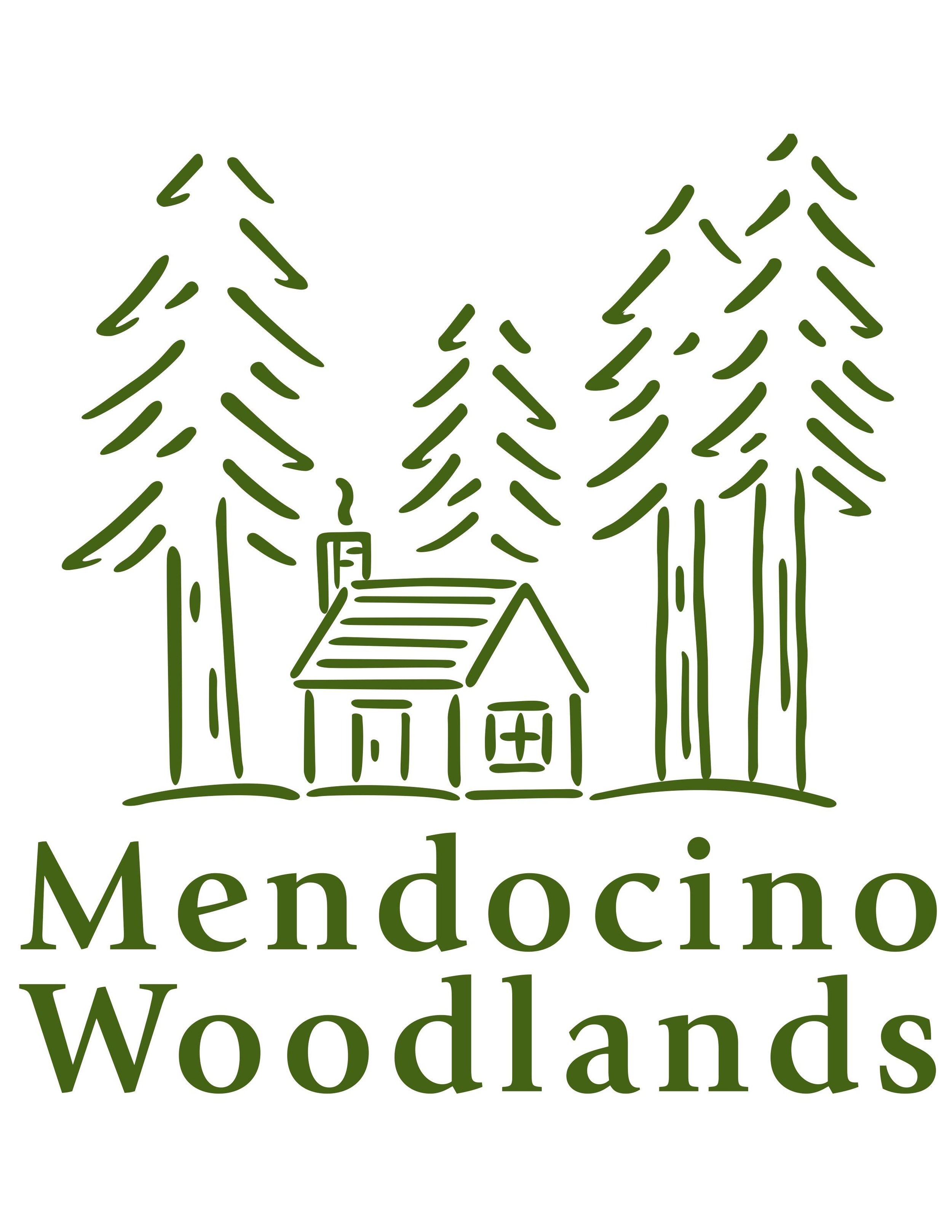The Mendocino Woodlands’ Role in Preventing Climate Change
Fact: Trees harness carbon dioxide.
And why is that important? Carbon Dioxide is one of several naturally occurring gasses that are part of our atmosphere. These gasses are responsible for making the planet habitable by capturing heat, creating a reflecting layer—the insulation the planet needs to support life. Understandably, too much carbon dioxide overheats the planet, changing the climate and effecting the balance of natural systems.
Trees use carbon dioxide to make food. It takes six molecules of carbon dioxide (CO2) to make 1 molecule of glucose or plant food. The faster growing trees like bamboo use more CO2 but are often short-lived and return the carbon dioxide to the atmosphere when they die—a temporary fix. Along those same lines, carbon dioxide levels drop dramatically during the northern hemisphere’s spring and summer, only to rise again as winter approaches. The planet requires plants not only to harness, but to HOLD carbon dioxide.
Fact: A three-thousand-year old redwood tree can remove 250 tons of carbon dioxide from the atmosphere in its lifetime.
Old growth redwood trees sequester more carbon dioxide than any other plant on earth. This is in part due to their longevity and in part due to their enormous size. Redwood forests accumulative biomass is measured in tons. Their ability to efficiently harvest CO2 is related to surface area—holding aloft large leafy crowns, which photosynthesize and then store C02 in their decay-resistant heartwood—not for a season, but for millennia.
There are 1.6 million acres of redwood forest on earth—7% old growth, 2% mature second growth like the Woodlands, and 91% almost evenly split between intermediate and young second growth—trees with an average trunk diameter of only 8”. Recent research shows that second growth forests contribute about a third as much biomass as their old growth counterparts but have continued to thrive and grow in the face of warmer temperatures and drought – playing a significant role in mitigating effects of climate change.
What would it take to restore these young forests to carbon housing old growth stands?
Save the Redwoods League is actively supporting research and proposing new strategies, using tools like restorative thinning and prescribed burns that clear the way for forests recovering from 19th and 20th century logging and helping them to become old growth stands once again. An additional benefit of restoration is the creation of interconnecting habitat for stranded species associated with old growth forests, like the spotted owl and the Humboldt marten. While redwoods have shown amazing resilience, it is unknown at this point how hot the planet will become and if summer fog declines there could be a shift of redwood forests to the north, if they can survive at all.
A recent article in Science calculated that if we were to plant 2.5 billion acres of forest we could remove 2/3 of the total amount of carbon released into the atmosphere since the 1800s.
That is a lot of acres, roughly equivalent to reforesting all of the United States of America, including Alaska and Hawaii. Located on 723 acres of mostly mature second growth forest, our camp association is doing its part to support our environment and prevent climate change. It has withstood the test of time and continues to shelter all of its creatures, both four-legged and two, providing clean air and shady glens for all to enjoy.
Ways you can help:
Drive alternative fuel vehicles or carpool to camp.
Eat more meat-free meals.
Get politically active and VOTE!
Reduce, re-use, recycle in your everyday life.
Donate to the MOSS program to foster the next generation of environmental protectors.
Support redwood forest stewardship by making a donation to support the Mendocino Woodlands.
- Information for this article came from the Magazine of Save the Redwoods League (Autumn/Winter 2018, Spring/Summer 2019, Autumn/Winter 2019.
-Owl photo courtesy of Sarah Wagner.
-Forest photos courtesy of John Birchard.


